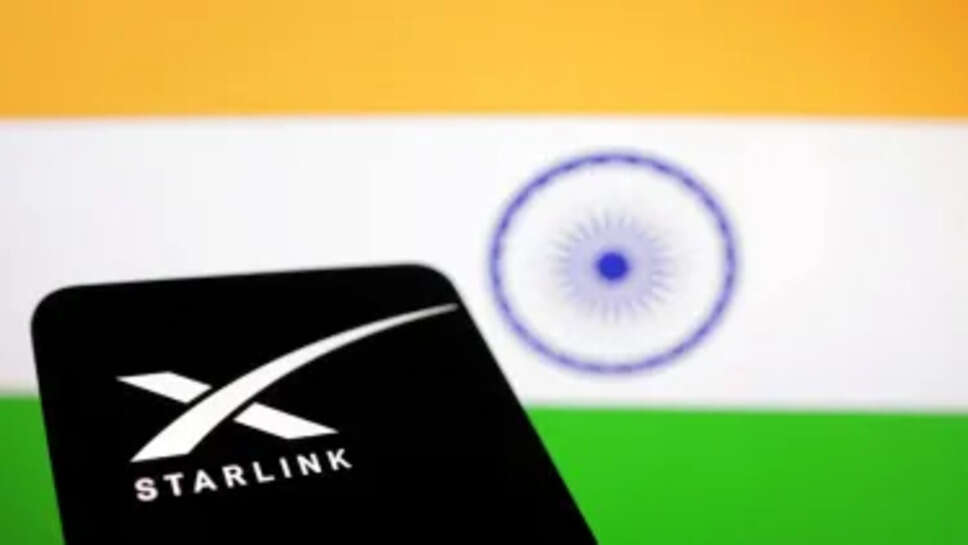Starlink Gets Government Nod to Launch in India: Prices, Plans, and Rollout Details

Elon Musk’s satellite internet venture Starlink has officially received regulatory approval to operate in India. After much anticipation, the company is set to deliver high-speed broadband delivered from orbit, potentially transforming internet access in remote regions and challenging established providers. Here's an in-depth look at pricing, plans, rollout timelines, and what users can expect over the coming year.
🚀 Why Starlink in India Matters
Starlink leverages a constellation of low Earth orbit (LEO) satellites that beam high-speed internet directly to user terminals on the ground. Globally, it has established a reputation for delivering impressive speed, reliability, and coverage—especially in rural areas and locations with poor terrestrial infrastructure. India’s regulatory nod opens the door to greater digital inclusion, bringing broadband to underserved communities and elevating competition in the ISP space.
📡 Coverage Zones and Priority Regions
Starlink plans a phased rollout across India, prioritizing regions that will benefit most:
-
Phase 1 – Remote and Underserved Areas
Focus on mountain regions (Himalayas, Northeastern India), coastal and island territories (Andaman & Nicobar, Lakshadweep), and tribal or forested zones. These localities face chronic broadband challenges, making them prime candidates. -
Phase 2 – Semi-Urban and Hinterland Areas
Smaller towns, district HQs, and agricultural belts with patchy or low-quality internet service. -
Phase 3 – Urban Markets
If capacity planning allows, Starlink may later cater to metro areas, offering an alternative to cable and fiber.
This strategy aligns with broader policy aims to expand connectivity and support regional development.
💰 Expected Pricing Structure
Starlink’s global subscription model includes two main components:
-
Hardware Cost
-
A one-time fee for the satellite dish, terminal, and router.
-
Internationally, hardware sells for around USD 499–599 (~₹40,000–₹48,000).
-
In India, expect adjustments due to duties and logistics, putting it around ₹45,000–₹55,000.
-
-
Monthly Subscription
-
Typically priced between USD 70–120 (~₹5,600–₹9,600) depending on market.
-
For India, industry analysts estimate a monthly plan in the ₹6,000–₹8,000 range, potentially with usage tiers, higher speed options, or data caps.
-
Estimated Pricing Table
| Component | Global Price | Estimated India Price |
|---|---|---|
| Hardware Kit | USD 499–599 | ₹45,000–₹55,000 |
| Entry Monthly Plan | USD 70 (~₹5,600) | ₹6,000–₹7,000/month |
| Premium Plan | USD 120 (~₹9,600) | ₹8,000–₹10,000/month |
Special subsidized rates or budget plans for villages and government users are also possible as part of rural connectivity efforts.
⚙️ Performance: Speeds and Latency
Global user data shows Starlink delivering:
-
Download speeds: 80–200 Mbps
-
Upload speeds: 12–30 Mbps
-
Latency: 25–50 ms in clear skies
In India, similar performance can be expected under optimal conditions. Mountainous terrain, heavy cloud cover, or monsoonal weather may momentarily reduce performance, but Starlink’s dynamic beam technology aims to maintain stable service.
Packages likely include:
-
Base Plan: 100–150 Mbps downstream, 20 Mbps upstream, suitable for homes, small offices, teleeducation.
-
Premium Plan: 200+ Mbps download, 30+ Mbps upload, ideal for larger homes, multi-device use, online gaming, small business operations.
🗓️ Rollout Timeline
Starlink’s entry into India will unfold in multiple stages:
-
Regulatory & Licensing (Now)
The rollout formally begins with permissions in place and initial infrastructure planning underway. -
Equipment Import & Testing (Q3–Q4 2025)
Distribution of terminals to pilot users, field tests in remote regions for signal strength, reliability, alignment with ground stations. -
Pilot Launch & Reservations (Q1 2026)
Pre-orders open through a registration portal; limited beta rollout to select subscribers with priority to high-need regions. -
Commercial Launch (Mid‑2026)
Broader rollout occurs across rural and semi-urban areas; hardware begins selling via online portals and possibly local resellers. -
Expansion to General Markets (Late‑2026 & beyond)
Wider availability across urban India, potentially a full national launch by early 2027, depending on satellite capacity and spectrum allocation.
🧩 Installation & Requirements
-
User Terminal: A compact satellite dish that auto-aligns upon power-up.
-
Router: Wi‑Fi enabled for multiple devices.
-
Power Source: Requires stable electricity; off‑grid installations may need backup power solutions.
-
Clear Sky View: Best functionality with a line of sight to the northern sky; rooftop or pole-mounted units are typical.
Professional installation may come at extra cost. Starlink’s self-installation model is viable, but more remote or rugged areas might rely on trained local technicians.
🔄 Competing with Indian ISPs
Advantages over current ISPs:
-
Wide coverage in areas unreachable by fiber or cable.
-
Independence from terrestrial infrastructure constraints.
-
Global mobility: terminals work across countries where service is available.
-
Lower latency than geostationary satellite alternatives.
Potential challenges:
-
Higher costs than budget DSL or basic wireless broadband.
-
Possible data usage limits or throttling.
-
Skewed performance during heavy rains—though buffer networks mitigate slowdowns.
India’s large fixed-line ISPs and mobile broadband giants will likely respond with upgraded plans and promotional offers. However, Starlink’s unique coverage edge will distinguish it in key markets.
🛡️ Regulatory & Spectrum Considerations
Starlink’s India approval includes permission for spectrum use and terminal import. However, several legal and operational aspects remain:
-
Customs & Duty: Import taxation will affect final pricing and timing.
-
Spectrum License: Coordination with local bodies for ground station infrastructure and spectrum coordination.
-
Local Data Compliance: Adhering to data localization norms, regulatory audits, and potential law enforcement access mandates.
-
Rural Subsidies: Government incentives under schemes like BharatNet may support discounted service for gram panchayats.
🌱 Social & Economic Impact
-
Education: Access to online classrooms, digital libraries, and real-time collaboration in classroom-deprived regions.
-
Healthcare: Telemedicine and remote monitoring in healthcare-starved districts and restive areas.
-
Local Enterprise: Farmers, small vendors, local industries with reliable broadband can access e-commerce and digital marketing channels.
-
Digital Inclusion: Provides an internet lifeline to remote border towns, coastal villages, and plateau settlements, bridging the digital divide.
🛎️ Waiting for Pre-Orders: What You Should Do
-
Register Early: Once Starlink India launches its portal, early sign-up could give priority for limited beta units.
-
Assess Power Needs: Plan for stable electricity or alternative energy setups to support uninterrupted service.
-
Install Placement: Ensure a clear northern view from your home or business premises for optimal signal.
-
Compare Backup Plans: Keep an alternative internet connection as leverage during service onboarding.
🌐 The Big Picture: A Step Toward a Connected India
Starlink’s entry into India, while still in its early phase, symbolizes a major push toward inclusive high-speed internet. It represents a future where remote hamlets, scientific outposts, and embarking digital ventures can seamlessly connect with the global grid.
Over 2026 and into 2027, Starlink is poised to shake up the broadband market—not by replacing existing ISPs but by introducing a powerful, complementary option. When used alongside fiber, wireless, and mobile broadband, it enriches consumers’ choices and strengthens national internet coverage.
Whether optimizing education in a Jharkhand village, connecting fishermen at sea, or broadcasting borderland news, Starlink’s satellites could amplify India’s voices—irrespective of geography.
Elon Musk’s Starlink could redefine broadband access in India, especially for millions in underserved communities. With anticipated prices between ₹6,000–₹10,000 per month and hardware costs around ₹45,000–₹55,000, the services come at a premium but deliver unmatched reach and speed. As 2026 approaches, early adopters should prepare for pre-orders, while all users stand to benefit from a significantly more connected national landscape.
